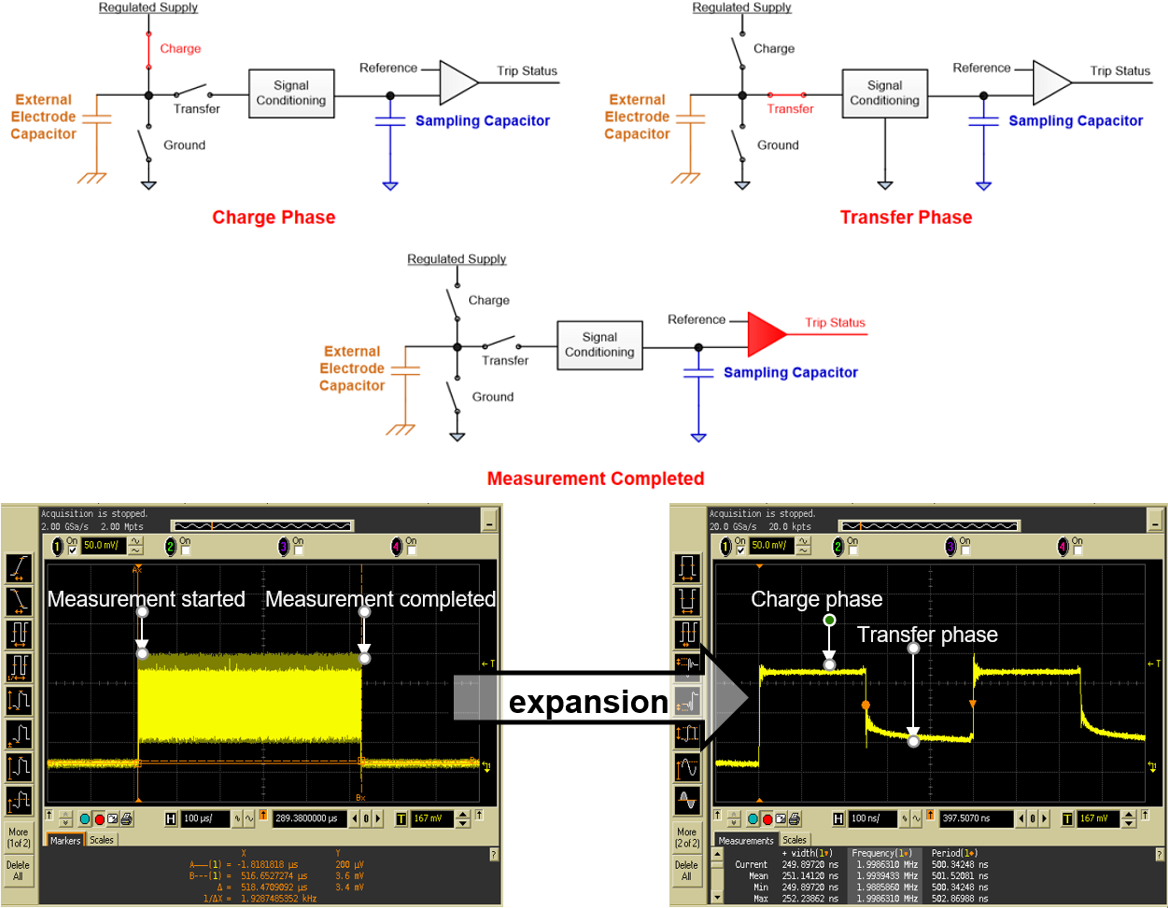SLAU857A May 2021 – July 2021 MSP430FR2476 , MSP430FR2512 , MSP430FR2522 , MSP430FR2532 , MSP430FR2533 , MSP430FR2632 , MSP430FR2633 , MSP430FR2672 , MSP430FR2673 , MSP430FR2675 , MSP430FR2676
2.3 TI's Capacitive Touch Technology
TI's CapTIvate capacitive touch sensing technology is based on charge transfer collection. The operation includes 1) charging the sensor input capacitor Cequal and 2) transferring the accumulated charge to the internal sampling capacitor Csample.
This process repeats until the voltage on both sides of Csample reache the trigger voltage Vtrip of the internal comparator. The number of charge transfers required to reach the threshold directly characterizes the size of Cequal. When the capacitive sensor is touched by a human hand, Cequal and charge transfer values change. The MCU senses the occurrence of a touch event by comparing the numbers of different charge transfer cycles. The MSP430 MCU uses a current mirror to control the proportional relationship between the input current of Csample and the discharge current of Cequal, to equivalently amplify Csample and have a larger range.
For self-capacitive detection, Cequal is equal to the capacitance between ground and RX I/O port. Through the charge and discharge phase shown in Figure 2-6, the electric charge in Cequal is transferred to the internal Csample. For mutual-capacitive detection, the circuit structure is more complex than that of the self-capacitive detection, but the principle is same. By keeping the voltage of capacitance between the ground and RX I/O port to be same in the charge and discharge phase, only the electrical charge is transferred to the internal Csample.
 Figure 2-6 Principle of Self-Capacitive Detection
Figure 2-6 Principle of Self-Capacitive Detection